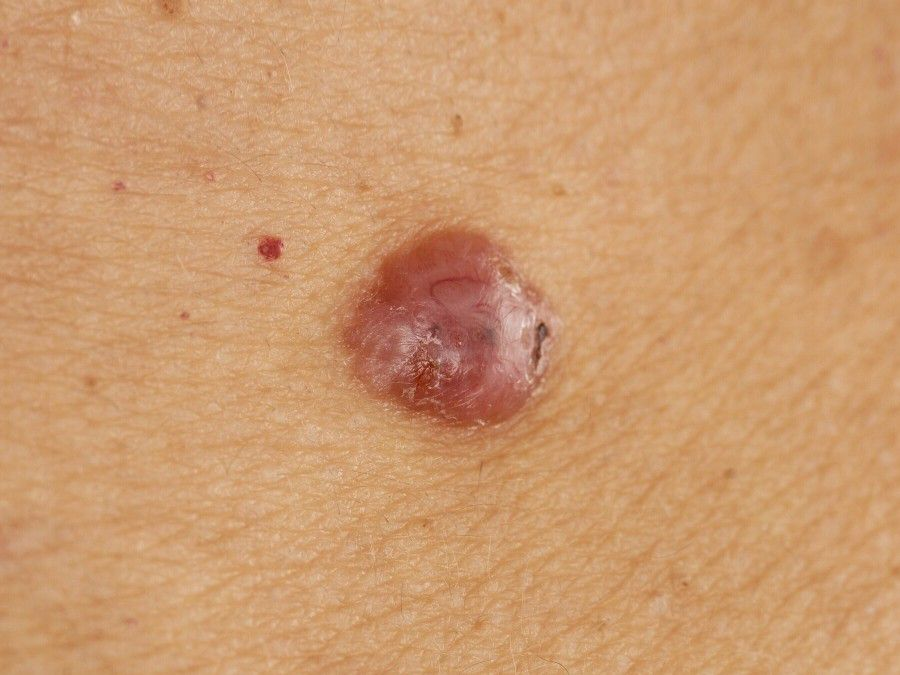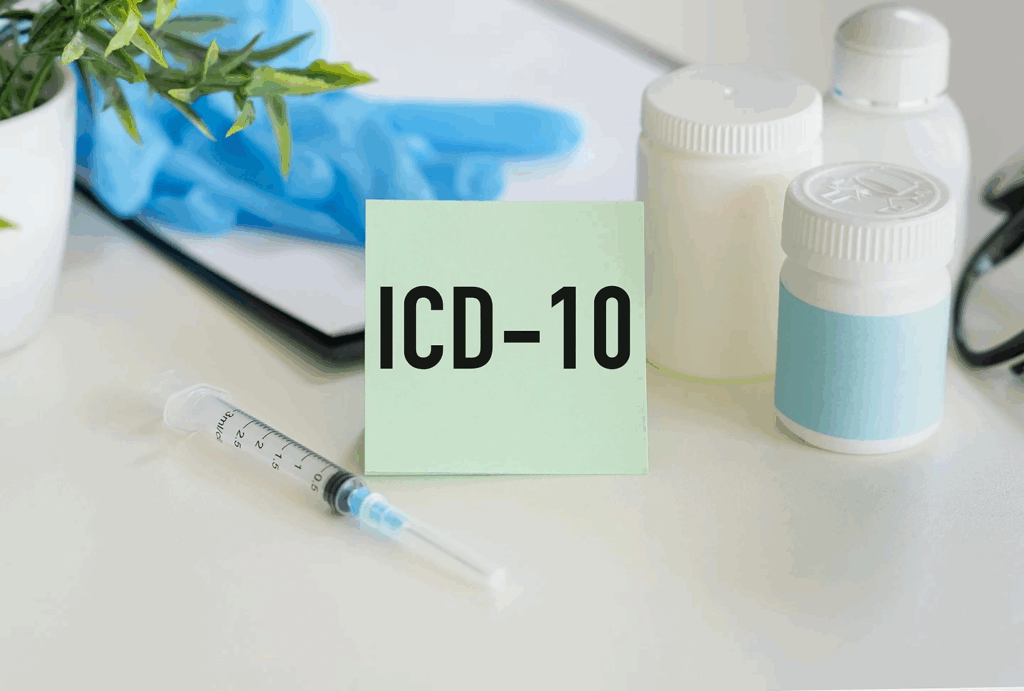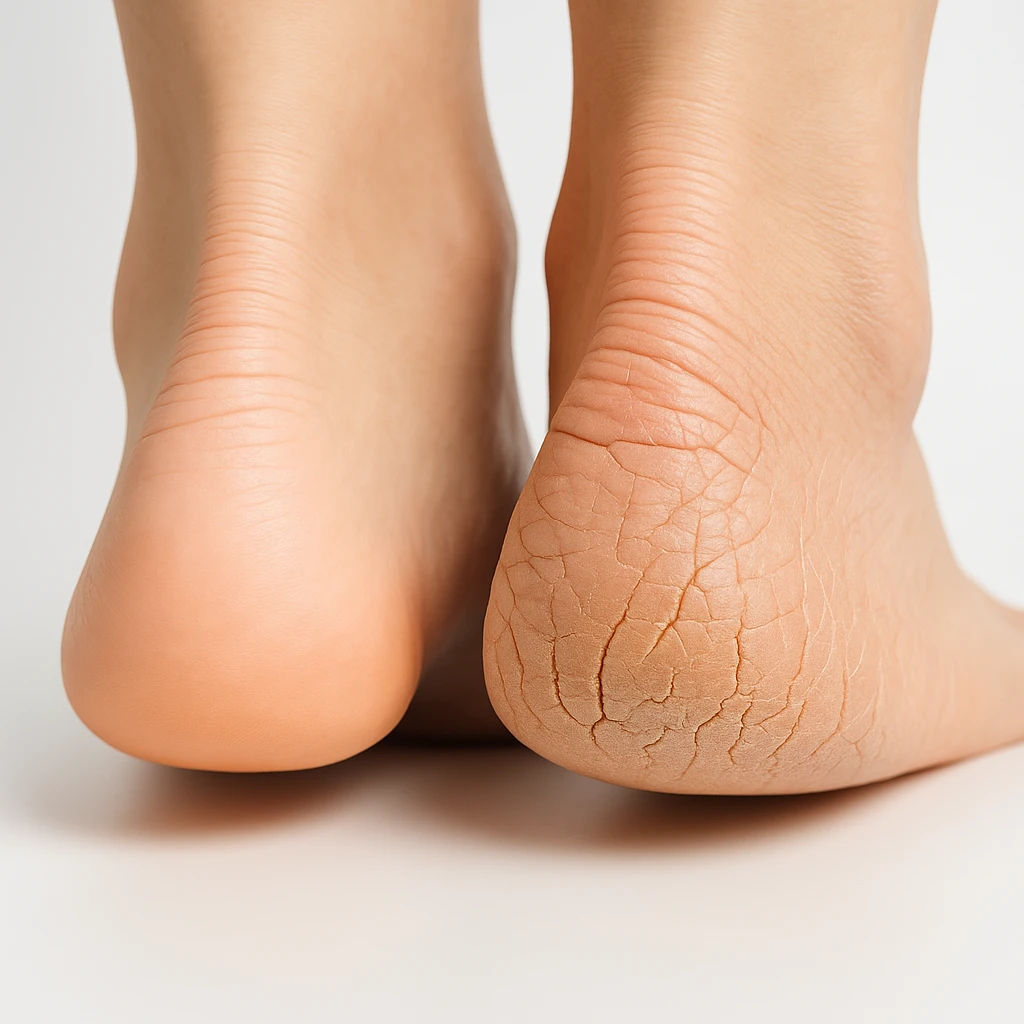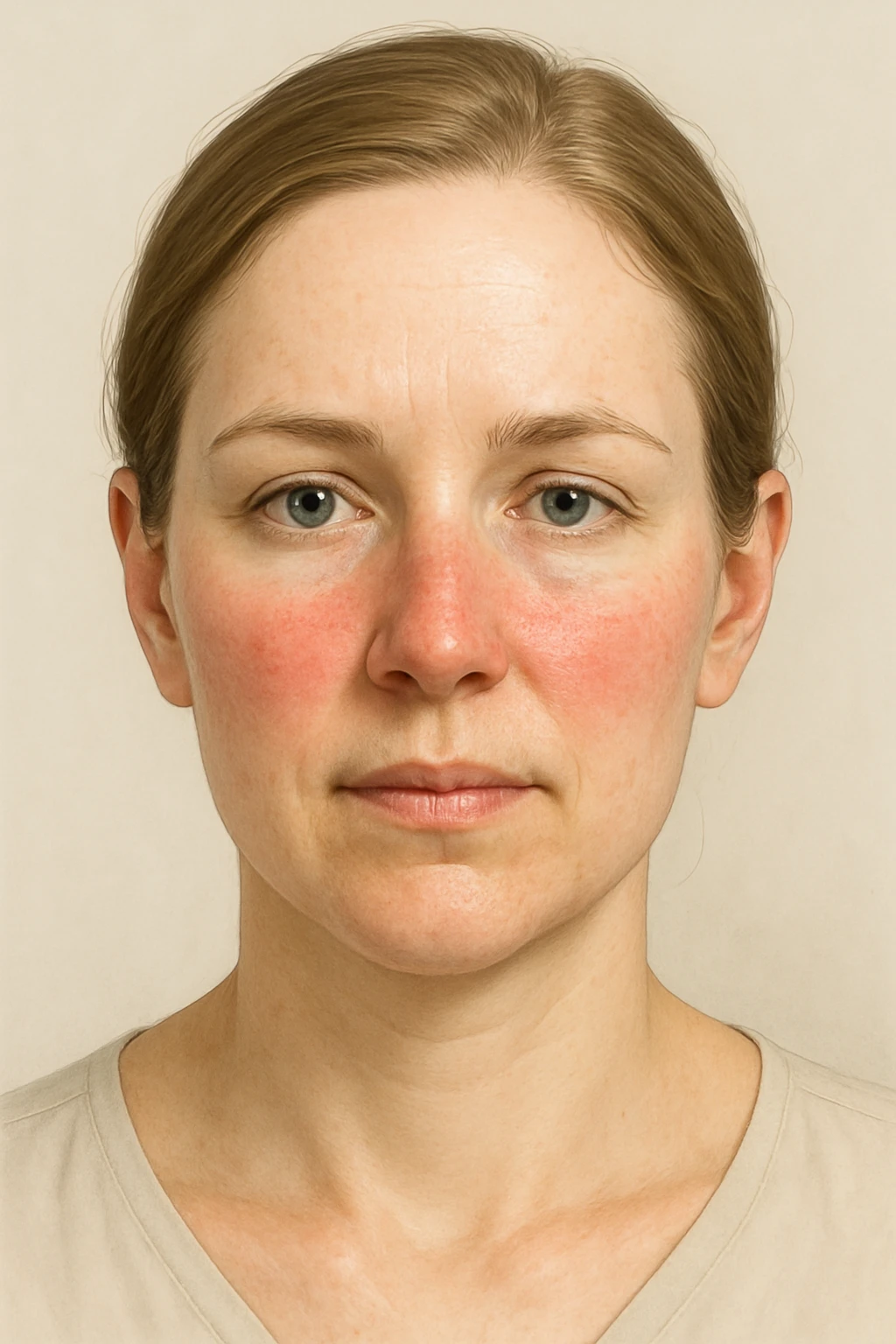Basal Cell Skin Cancer ICD-10: Accurate Coding, Diagnosis, and Clinical Insight
- Understanding the Basics: What Is Basal Cell Carcinoma?
- Why ICD-10 Coding Matters in Skin Cancer Management
- Breaking Down the C44 Category: ICD-10 Structure for BCC
- Common Clinical Presentations and Diagnostic Challenges
- Documenting Laterality and Specificity in ICD-10 Codes
- Coding for Multiple and Recurrent Basal Cell Carcinomas
- Linking Pathology Reports With ICD-10 for Full Coding Accuracy
- ICD-10 and Procedure Coding: CPT and HCPCS Alignment
- Challenges in Coding BCC in Outpatient Versus Inpatient Settings
- Special Considerations in Pediatric and Geriatric Coding
- Importance of ICD-10 in Cancer Surveillance and Registries
- Preventing Common ICD-10 Coding Errors in BCC Cases
- Coordination Between Clinicians and Coders: A Two-Way Responsibility
- When to Use Supplementary Z-Codes With Basal Cell Carcinoma
- Key ICD-10 Codes for Basal Cell Carcinoma by Location
- Future Trends in ICD Coding for Skin Cancer
- Frequently Asked Questions (FAQ)

Understanding the Basics: What Is Basal Cell Carcinoma?
Basal cell carcinoma (BCC) is the most prevalent form of skin cancer worldwide, particularly in individuals with fair skin and significant sun exposure. It arises from the basal cells in the deepest layer of the epidermis and is generally slow-growing and locally invasive. Unlike melanoma or squamous cell carcinoma, BCC very rarely metastasizes, but it can cause substantial local tissue destruction if not treated early.
This cancer typically appears on sun-exposed areas of the body—most commonly the face, neck, scalp, ears, and upper trunk. Lesions may present as shiny nodules, flat plaques, or ulcerated sores that don’t heal. Given its frequency and variability in presentation, accurate clinical identification and documentation are crucial for both treatment and health coding purposes.
Why ICD-10 Coding Matters in Skin Cancer Management
The International Classification of Diseases, 10th Revision (ICD-10), is a standardized system used worldwide to classify and code all diseases and medical diagnoses. For basal cell carcinoma, ICD-10 coding ensures consistency in medical records, insurance claims, epidemiological research, and healthcare quality metrics. Without proper coding, miscommunication between providers and insurance delays may occur, affecting patient care and billing accuracy.
Each form of BCC has a unique ICD-10 code that reflects its location on the body. For example, basal cell carcinoma of the eyelid, nose, or scalp are assigned different codes under category C44, which is the general heading for nonmelanoma skin cancers. Coders, physicians, and billing teams must collaborate to document the correct anatomical site and confirm pathology to assign the most precise code.
Improper use of unspecified codes like C44.91 (BCC, unspecified site) can lead to data inaccuracy and denials. This highlights the importance of education in both dermatology and medical coding fields.
Breaking Down the C44 Category: ICD-10 Structure for BCC
In the ICD-10-CM manual, C44 encompasses “Other and unspecified malignant neoplasms of skin.” It is broken into subcategories based on anatomical site, and each one further specifies the type of cancer, such as basal cell, squamous cell, or other specified neoplasms. Basal cell carcinoma is designated as part of the C44.1–C44.9 range, depending on the location.
For instance:
- C44.112: Basal cell carcinoma of skin of right eyelid, including canthus
- C44.212: BCC of right ear and external auditory canal
- C44.319: BCC of scalp and neck, unspecified side
- C44.91: BCC, unspecified site
These distinctions help ensure that medical documentation reflects clinical reality, which is especially important when tracking treatment outcomes and cancer registries. For eyelid tumors, such as those discussed in basal cell cancer of the eyelid, specificity ensures accurate surgical planning and reconstructive documentation.

Common Clinical Presentations and Diagnostic Challenges
BCC may mimic a variety of benign skin conditions, making clinical diagnosis tricky. Common presentations include a pearly nodule, often with visible blood vessels (telangiectasia), or a scar-like flat lesion. Some lesions may ulcerate or bleed, particularly after minor trauma. Because of its indolent growth, patients may ignore these signs for months or years.
BCC on non-facial areas, such as the trunk or limbs, may be mistaken for eczema or psoriasis, while lesions on the scalp can resemble seborrheic dermatitis. This overlap in appearance underscores the importance of biopsy for definitive diagnosis.
Failure to identify or confirm the lesion’s exact site and pathology can delay proper ICD-10 classification. This is comparable to the diagnostic ambiguity in other cancers with nonspecific symptoms—such as back ache in bowel cancer, where pain may be misattributed until late stages.
Documenting Laterality and Specificity in ICD-10 Codes
ICD-10 coding emphasizes anatomical precision. For basal cell carcinoma (BCC), this means clearly specifying the body site and the side—right, left, or unspecified. For instance, C44.112 refers specifically to BCC of the right eyelid, while C44.122 applies to the left side. Such detail aids in surgical planning, outcome tracking, and recurrence monitoring.
Laterality also matters in preauthorization and insurance reimbursement. Some procedures—especially those involving the eyes, ears, or limbs—require coding that reflects whether the lesion was on the dominant side, involved critical structures, or required reconstructive techniques. Missed specificity could result in claim denials or inaccurate cancer statistics.
When multiple lesions exist in different anatomical regions, each must be separately documented and coded. For example, a patient with one BCC on the scalp and another on the lower eyelid would require C44.319 and C44.112, respectively.
Coding for Multiple and Recurrent Basal Cell Carcinomas
Patients who have had one BCC are at increased risk of developing additional lesions. In fact, recurrence or new primary BCCs are so common that accurate ICD-10 coding must reflect whether the tumor is initial, recurrent, or part of a known skin cancer syndrome.
For recurrent tumors, documentation should include:
- The prior site
- The time since initial diagnosis
- Any treatment history
- Confirmation of histological recurrence
In syndromic cases like Gorlin syndrome (basal cell nevus syndrome), additional codes (e.g., Q82.8) may be used alongside C44 codes. Proper integration of multiple codes ensures comprehensive billing and clinical records.
This is especially important for elderly or immunosuppressed patients, where lesion recurrence may be more aggressive or mimic unusual cancers, such as bartholin cyst cancer, which also requires clarity on recurrence versus new primary disease.
Linking Pathology Reports With ICD-10 for Full Coding Accuracy
Accurate coding is only as reliable as the documentation it’s based on. Pathology reports play a critical role in confirming the diagnosis, tumor subtype, margins, and staging. Coders must verify that the documentation includes:
- Confirmation of basal cell carcinoma
- Location and laterality
- Histologic subtype (e.g., nodular, infiltrative, morpheaform)
- Depth of invasion, when applicable
Pathology findings should be interpreted collaboratively between the clinical team and coders, ensuring that codes align with the actual biopsy results. For example, a lesion documented as “suspicious for BCC” without histological confirmation cannot be coded definitively as C44. Instead, it may require Z-code classification until verified.
This level of detail avoids mislabeling benign lesions as malignant and helps maintain data integrity in cancer registries, payer databases, and hospital outcome reports.

ICD-10 and Procedure Coding: CPT and HCPCS Alignment
While ICD-10 codes identify the diagnosis, CPT (Current Procedural Terminology) and HCPCS (Healthcare Common Procedure Coding System) codes are used to represent the procedures performed, such as biopsies, excisions, or Mohs micrographic surgery. The interplay between ICD-10 and CPT coding is essential for:
- Billing accuracy
- Clinical justification
- Reimbursement optimization
For example, an excision of a 1.5 cm BCC on the left cheek may be billed using:
- ICD-10: C44.722 (Basal cell carcinoma of left cheek)
- CPT: 11642 (Excision of malignant skin lesion, 1.1 to 2.0 cm)
Failure to align the diagnosis with the correct anatomical procedure code can lead to claim rejection. Moreover, documentation of margins, reconstruction, and cosmetic location affects the CPT coding tier.
Proper linkage between ICD-10 and CPT is especially vital for facial and periorbital procedures, where codes reflect both medical necessity and reconstructive complexity. Without it, surgical efforts may be under-compensated and misrepresented in national databases.
Challenges in Coding BCC in Outpatient Versus Inpatient Settings
Coding for basal cell carcinoma differs significantly between outpatient (e.g., dermatology clinic) and inpatient (e.g., oncology ward) environments. In outpatient care, coding focuses on location, laterality, and treatment, such as excision or cryotherapy. The codes are often linked to minor procedures and preventive follow-up.
In contrast, inpatient coding is generally used for complex or advanced cases requiring hospitalization, such as periocular tumors needing oculoplastic surgery, or invasive lesions requiring flap reconstruction. In such cases, coding must include secondary diagnoses, comorbidities, and complications.
Proper documentation also influences hospital metrics, resource allocation, and performance indicators. For instance, a misclassified inpatient case could underreport the seriousness of advanced skin cancers like periocular or eyelid BCC, potentially distorting hospital risk profiles. Basal cell cancer eyelid – in the context of complex cases in hospital practice.

Special Considerations in Pediatric and Geriatric Coding
Although basal cell carcinoma is rare in pediatric patients, it may occur in children with genetic syndromes or extensive sun exposure. In such cases, coders must apply ICD-10 codes not only for the cancer itself (e.g., C44.319) but also for related syndromes like Gorlin syndrome (Q82.8), along with Z-codes for family history or genetic counseling.
In the geriatric population, BCC is far more common and often multifocal. Accurate documentation becomes essential to distinguish between new lesions, recurrences, and post-treatment changes. Coders must watch for common pitfalls in this demographic, including:
- Skin thinning and atrophic lesions mistaken for BCC
- Delayed or incomplete diagnostic workups
- Overuse of unspecified codes
Elderly patients may also present atypically or with overlapping symptoms, such as back or facial pain from neural invasion. These signs may mirror concerns found in bowel cancer cases with back pain, where seemingly unrelated symptoms conceal deeper oncologic issues. Back ache bowel cancer – for analogy with atypical complaints in the elderly.
Importance of ICD-10 in Cancer Surveillance and Registries
Beyond billing, ICD-10 codes play a vital role in public health tracking, epidemiological research, and cancer registries. Skin cancers, particularly nonmelanoma types like BCC, are often underreported because of their typically outpatient treatment. When coded properly, they contribute to national statistics that inform funding, research focus, and prevention campaigns.
For example, cancer registries may track:
- Number of BCC cases per year by body site
- Recurrence rates and outcomes
- Geographical trends in skin cancer prevalence
Inconsistent or vague coding (e.g., C44.91 for “unspecified site”) undermines the reliability of such data. Clinical teams should be trained to emphasize location-specific diagnosis and ensure that coders receive operative notes, pathology, and patient histories.
Preventing Common ICD-10 Coding Errors in BCC Cases
Despite its relative simplicity, coding basal cell carcinoma is prone to several common errors:
- Using unspecified site codes when location is known
- Omitting laterality when documentation provides it
- Failing to update recurrent cases or follow-up visits with appropriate Z-codes
- Not linking pathology confirmation or treatment procedures
Another frequent mistake involves confusion between BCC and other skin neoplasms like squamous cell carcinoma (C44.xx), sebaceous carcinoma (C44.4x), or melanoma (C43.xx). If biopsy documentation is missing or unclear, coders may assign the wrong neoplasm type.
To avoid these issues, clinics should implement:
- Routine documentation audits
- Pathology-clinician-coder communication pathways
- Reference checklists for common dermatologic ICD-10 codes
In educational settings and clinical coding courses, BCC coding is often used as a case study for how small errors in anatomical detail can scale up to large problems in reimbursement and reporting.
Coordination Between Clinicians and Coders: A Two-Way Responsibility
Effective ICD-10 documentation relies heavily on communication between physicians, dermatopathologists, and medical coders. Coders depend on clinicians to specify not only the presence of basal cell carcinoma but also precise details such as:
- Lesion location and laterality
- Histological subtype
- Whether it is primary, recurrent, or residual
- The type of treatment administered
Physicians, in turn, benefit from understanding how coders interpret clinical notes. For example, a surgeon who writes “BCC on cheek excised” without further clarification may inadvertently trigger a vague code (C44.729). But noting “recurrent nodular basal cell carcinoma of the left cheek, 1.6 cm, excised with clear margins” provides enough specificity for coding accuracy.
Clinics that implement joint training sessions and coding-specific note templates reduce claim denials and enhance registry quality. Coders are not expected to diagnose—but they can only work with the data clinicians document.
When to Use Supplementary Z-Codes With Basal Cell Carcinoma
Z-codes are often overlooked but serve an important role in supplementing cancer documentation. They help define personal history, genetic predisposition, risk factors, or reasons for follow-up care.
Common Z-codes used alongside C44 for BCC include:
- Z85.828: Personal history of other malignant neoplasms of skin
- Z80.8: Family history of malignant neoplasms
- Z08: Encounter for follow-up exam after completed treatment
- Z01.818: Encounter for other preprocedural examination
These codes provide non-clinical context that helps insurers and public health analysts understand why care is being delivered. They’re also important when evaluating recurrence, long-term dermatologic surveillance, or hereditary cancer syndromes.
In patients with a long BCC history, or who have had surgical resections in high-risk locations (like the face), the use of Z-codes is vital in maintaining longitudinal medical records.
Key ICD-10 Codes for Basal Cell Carcinoma by Location
| ICD-10 Code | Description |
| C44.112 | BCC of skin of right eyelid, including canthus |
| C44.121 | BCC of skin of left eyelid, including canthus |
| C44.211 | BCC of right ear and external auditory canal |
| C44.311 | BCC of skin of scalp and neck, right side |
| C44.519 | BCC of trunk, unspecified side |
| C44.619 | BCC of upper limb, unspecified side |
| C44.719 | BCC of lower limb, unspecified side |
| C44.91 | BCC of skin, unspecified |
| Z85.828 | Personal history of BCC or other skin cancers |
| Z08 | Follow-up after BCC treatment |
This table provides a concise reference for clinicians and coders to quickly identify and apply correct codes based on body site, improving speed and precision in documentation workflows.
Future Trends in ICD Coding for Skin Cancer
The landscape of ICD classification is evolving, with proposals to integrate more precise tumor characteristics, genomic information, and treatment response indicators. Future updates may expand coding options to reflect:
- Specific subtypes of BCC (e.g., morpheaform, superficial)
- Molecular markers (e.g., PTCH1 mutations in Gorlin syndrome)
- Distinctions between new primaries and field cancerization lesions
- AI-assisted image-based coding suggestions linked to electronic health records
As teledermatology and AI-based lesion triage become more widespread, coding systems will need to adapt to capture diagnostic certainty levels, photo documentation, and asynchronous pathology reviews.
For medical professionals, staying informed about ICD-10 revisions—and how they reflect new understandings of cancer biology and care delivery—is essential for keeping coding accurate, complete, and future-ready.
Frequently Asked Questions (FAQ)
What is the ICD-10 code for basal cell carcinoma?
The ICD-10 code for basal cell carcinoma depends on the location of the tumor. The base category is C44, with further digits specifying the exact anatomical site (e.g., C44.112 for the right eyelid, C44.519 for trunk, unspecified side).
Is C44.91 a valid code for BCC?
Yes, C44.91 represents “Basal cell carcinoma of skin, unspecified site,” but it should only be used when the location is not documented. Using site-specific codes is more accurate and preferred for clinical and insurance purposes.
How do I code a recurrent basal cell carcinoma?
There’s no distinct ICD-10 code for recurrence, but Z85.828 (personal history of skin cancer) can be used alongside the appropriate C44 code to indicate prior disease. Documentation should mention that the lesion is a recurrence.
What if a patient has multiple BCCs at once?
Each lesion should be coded separately according to its location. For example, BCCs on the scalp and left cheek would require C44.319 and C44.722, respectively.
Can basal cell carcinoma be coded without biopsy confirmation?
No. Definitive diagnosis and ICD-10 classification should be based on pathology confirmation. If a lesion is only suspected, Z-codes or non-malignant neoplasm codes may be more appropriate until biopsy results are available.
Do I need to specify laterality in ICD-10 coding for BCC?
Yes, many C44 codes require left, right, or unspecified distinctions. Accurate laterality ensures proper reimbursement and helps track outcomes related to specific body regions.
Is basal cell carcinoma considered a reportable cancer in registries?
In many countries, BCC is not reportable due to its low mortality, though some states and institutions include it in voluntary registries for tracking prevalence and recurrence.
What Z-codes are useful with BCC?
Useful Z-codes include Z85.828 (history), Z08 (follow-up), Z01.818 (preprocedural exam), and Z80.8 (family history). These supplement the core C44 code with clinical context.
How is BCC of the eyelid coded?
BCC of the right eyelid is coded as C44.112, and the left eyelid as C44.121. These codes include lesions involving the canthus and are crucial in periocular oncology.
How does coding differ in children versus adults?
In children, additional codes such as Q82.8 (Gorlin syndrome) may apply. Pediatric BCC is rare, so thorough genetic and family history documentation is key to choosing correct supplementary codes.
What happens if I use an unspecified site code too often?
Overuse of unspecified codes like C44.91 may lead to claim denials, audits, and reduced data quality for research. Detailed clinical notes help coders assign more accurate codes.
Is there a separate ICD-10 code for nodular or morpheaform BCC?
Currently, ICD-10 does not distinguish histologic subtypes of BCC in the primary diagnosis code. These details should be recorded in the pathology report and clinical notes but are not yet reflected in C44 categories.
What role does ICD-10 coding play in reimbursement?
Correct ICD-10 coding is essential for insurance approval, procedure matching, and treatment justification. Inaccurate or vague coding may delay payments or lead to incorrect claim denials.
Can I use ICD-10 for suspected BCC in teledermatology?
If a diagnosis is not confirmed, use a Z-code for suspected condition or observation. Once confirmed, the accurate C44 code should be applied. Documentation of photo analysis or AI triage should support code assignment.
Is ICD-10 coding relevant in pathology reports?
Pathologists do not typically assign ICD-10 codes, but their detailed findings guide clinicians and coders in selecting the correct codes, especially when specifying location, recurrence, or margin status.












